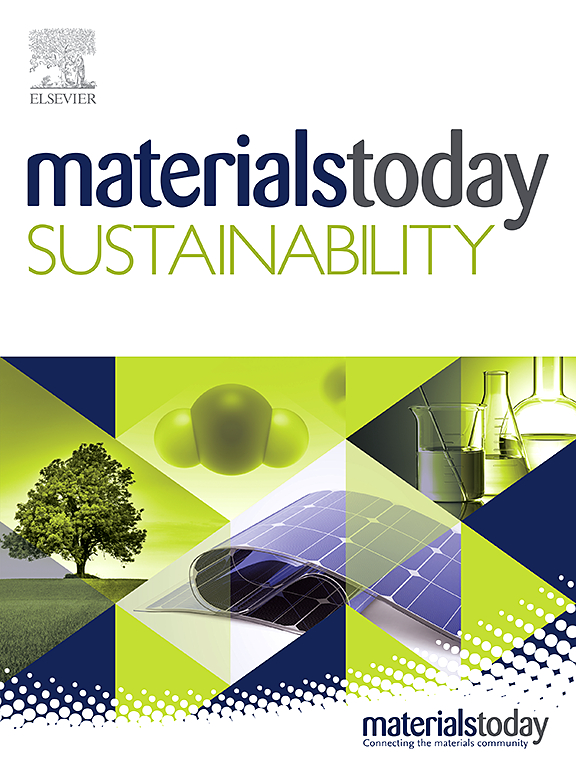Synthesis and characterization of activated carbon derived from agricultural waste (cocoa pod husks) as potential electrode for symmetric supercapacitor
IF 7.1
3区 材料科学
Q1 GREEN & SUSTAINABLE SCIENCE & TECHNOLOGY
引用次数: 0
Abstract
Biomass waste of cocoa pod husks is adopted as starting material to synthesize Activated carbon (ACC) using a tube furnace via KOH activation with temperature ranging from 500 °C to 800 °C. The activated carbon prepared at 600 °C (ACC 600 °C) shows improved qualities than the other prepared samples, according to the physico-chemical analyses. A sponge-like morphology, amorphous structure, and microporous and mesoporous carbon are observed in the synthesized material. Trasatti approach is adopted to verify the storage mechanism of the activated carbon material (ACC 600 °C) with the percentage contribution of capacitive and diffusion-controlled effect as 92.4732% and 7.5268% for positive electrode while the negative electrode possesses 75.565% and 24.435% at scan rate of 50 mVs−1. A symmetric device is fabricated from the ACC 600 °C, which gives a maximum specific energy (S.E.) of 19 Wh kg−1 with a corresponding specific power (S.P.) of 453 W kg−1 at a specific current of 0.5 A g−1 in 2.5 M KNO3 solution. The coulombic efficiency of the device is 99.6% after 10000 cycles with 72% capacitance retention. The obtained results suggest that the activated carbon derived from cocoa pod husks could be used as a promising material for supercapacitor's application.
作为对称超级电容器潜在电极的农业废弃物(可可荚壳)衍生活性炭的合成与表征
以可可荚壳生物质废料为起始材料,使用管式炉通过 KOH 活化法合成活性炭(ACC),温度范围为 500 °C 至 800 °C。根据物理化学分析,在 600 °C 下制备的活性炭(ACC 600 °C)比其他制备的样品质量更好。合成材料具有海绵状形貌、无定形结构以及微孔和介孔碳。在 50 mVs-1 的扫描速率下,正极的电容效应和扩散控制效应分别占 92.4732% 和 7.5268%,而负极则分别占 75.565% 和 24.435%。在 2.5 M KNO3 溶液中,当比电流为 0.5 A g-1 时,ACC 600 °C 制成的对称装置的最大比能量(S.E.)为 19 Wh kg-1,相应的比功率(S.P.)为 453 W kg-1。经过 10000 次循环后,该装置的库仑效率为 99.6%,电容保持率为 72%。这些结果表明,从可可荚壳中提取的活性炭可以作为一种很有前途的超级电容器应用材料。
本文章由计算机程序翻译,如有差异,请以英文原文为准。
求助全文
约1分钟内获得全文
求助全文
来源期刊

Materials Today Sustainability
Multiple-
CiteScore
5.80
自引率
6.40%
发文量
174
审稿时长
32 days
期刊介绍:
Materials Today Sustainability is a multi-disciplinary journal covering all aspects of sustainability through materials science.
With a rapidly increasing population with growing demands, materials science has emerged as a critical discipline toward protecting of the environment and ensuring the long term survival of future generations.
 求助内容:
求助内容: 应助结果提醒方式:
应助结果提醒方式:


